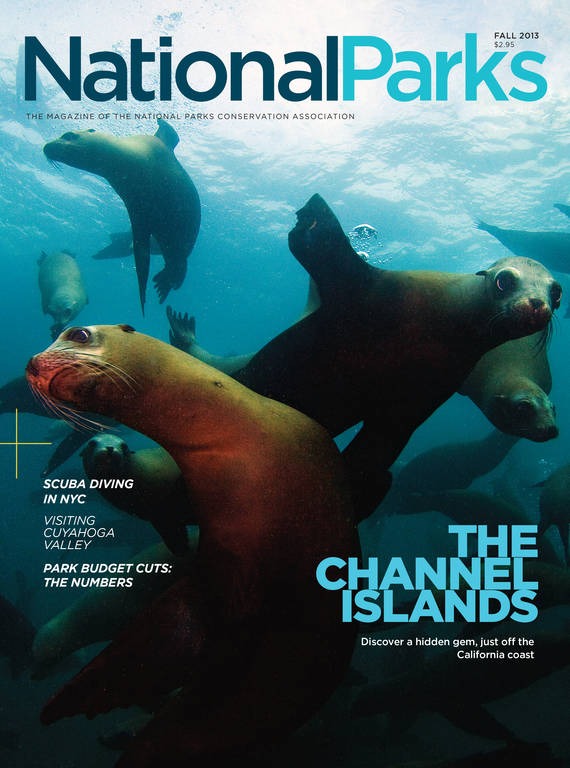Fall 2013
Swimming with Dinosaurs
Atlantic sturgeon are making a surprising comeback in the Chesapeake Bay.
Few people know Virginia’s James River as intimately Matt Balazik. Like his father and grandfather before him, Balazik grew up swimming, fishing, and rowing a boat through these waters, and did his part to keep the riverbanks litter-free. Occasionally he’d hear a story about his grandfather catching a small sturgeon—ancient bottom feeders that swam the Chesapeake for hundreds of millions of years. But beyond that, he never gave much thought to them. They didn’t even float to the surface when a nearby chemical plant dumped insecticides into the river, killing nearly every living thing (and spurring creation of the Clean Water Act). “My whole family would have told you that the sturgeon were gone,” Balazik says.
Fast-forward to 2007, a year after Congress established the Captain John Smith Chesapeake National Historic Trail. Balazik is working toward his biology degree at the Virginia Commonwealth University when he receives a call that a dead sturgeon is floating in a nearby creek.
Skeptical, Balazik hops in his boat and takes off down the James River. Ten minutes into the ride he catches something out of the corner of his eye, something big—monstrous, actually—leaping into the air. He stops the boat and waits. Then he sees it again, and again. Clear as day. Big, beautiful, armored sturgeons, arcing and twisting and soaring into the air in a mating dance as old as time. It’s as graceful as a water ballet, as powerful as a scene from Jurassic Park—these monster fish (measuring up to 14 feet long and 800 pounds) literally swam with the dinosaurs. In fact, they were once so plentiful that their breeching posed navigational hazards along the James and Susquehanna Rivers.
Balazik was mesmerized. “I’d lived on the river my whole life and had never seen anything like that before,” he says. “”My dad had never seen it. My brothers, who are 10 years older than me, had never seen it.”
Balazik had found his calling: to learn everything he could about the species and use that information to help ensure that it never disappears from these waters again. To prove his commitment, he tattooed a sturgeon onto his arm.
But why, after a decades-long disappearance, were the fish showing up in the Chesapeake again? “It’s not like we did something three or four years ago, and suddenly they came back,” he says. “Sturgeon must have been successfully reproducing 20 years ago for us to see these fish now.”
The introduction of the Clean Water Act likely played a big role, helping to curb sedimentation from agriculture upstream that once buried fragile eggs. Moratoriums on sturgeon harvesting in the United States helped, too. “We’re starting to see the fruits of that legislation,” Balazik says. “We left the fish alone, and amazingly, they came back on their own. Now we’re just trying to figure out what they’re doing.”
Every fall, Balazik and his team at Virginia Commonwealth University get to work doing just that. In August sturgeon begin their annual journey from the salty Atlantic to the freshwater Chesapeake to deposit their eggs. This movement allows scientists to capture, measure, and weigh the fish, estimate the population size of this federally listed endangered species, and insert tracking tags that monitor an individual’s movements for up to 10 years.

National Parks
You can read this and other stories about history, nature, culture, art, conservation, travel, science and more in National Parks magazine. Your tax-deductible membership donation of $25 or more entitles…
See more ›“If we find out that a bunch of sturgeon are congregating in a certain area, then we’ll know that area needs to be protected,” Balazik says. “If we discover spawning grounds, then we know those areas need protection, too, and we can study them and maybe even create more spawning habitat like it. It’s all about being in the right place at the right time. The more we know, the more we improve our chances of getting lucky.“
It’s impressive work, given his shoestring budget. Balazik spends a lot of time volunteering on commercial ships in exchange for donated equipment like ropes, floats, and anchors. He also created a public “adopt-a-sturgeon” program: For $300, which covers the cost of one tracking device, Balazik will send you updates on spawning events and your adopted sturgeon’s locations. The National Park Service also partnered with the National Oceanic and Atmospheric Administration to install an innovative buoy system along the Captain John Smith Trail that provides interpretation for visitors, measures air and water quality, and tracks tagged sturgeon.
Sediment and pollution from stormwater runoff continue to challenge sturgeon recovery. And even though sturgeon fishing has been illegal since 1998, the animals can be caught and killed in gillnets meant for species like striped bass. But federal and state agencies are working closely with the James River Association, one of NPCA’s partners in the Choose Clean Water Coalition, to restore sturgeon to their native habitat in Virginia and even create artificial spawning reefs.
“These fish have been around for 120 million years,” Balazik says. “They made it through the mass extinctions just fine—the meteorite, the super volcano, and all of these massive die-offs—and then we almost wiped them out in a few decades. But sturgeon are resilient. If we just leave them alone, they’ll come back and be strong.”
About the author
-
 Amy Leinbach Marquis
Amy Leinbach MarquisAmy Leinbach Marquis is former associate editor at National Parks magazine.



